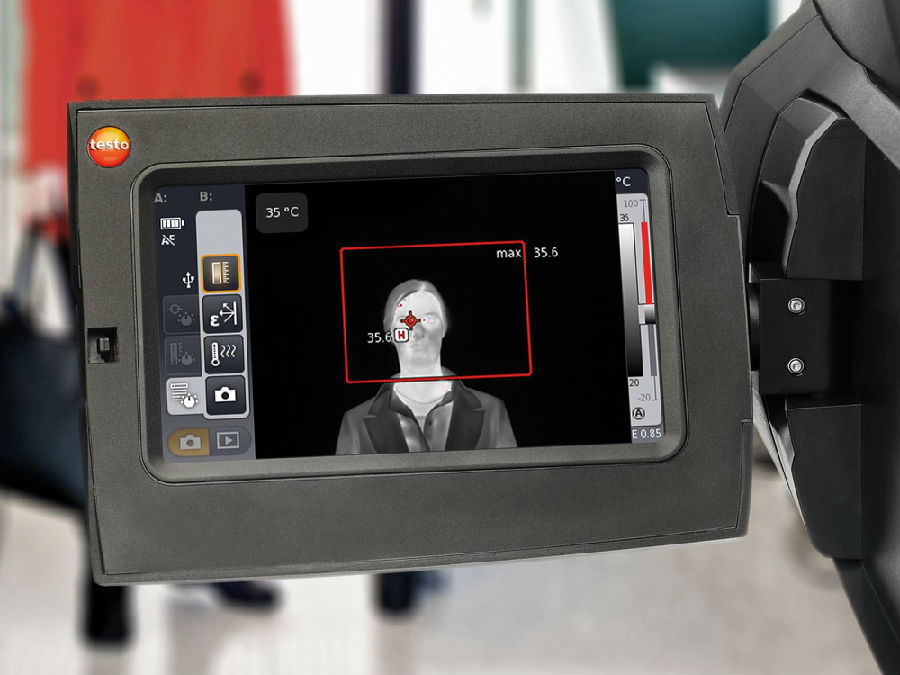Identifying individuals who are infected is important, in order to stop them passing the virus on.
鑒別誰是被感染者很重要,這樣才能阻止他們傳播病毒。
But temperature data can also be used to track the epidemic as it spreads.
但是溫度數(shù)據(jù)也可被用來追蹤疫情的傳播。
This is the goal of Kinsa Health, a firm in San Francisco that has sold
這是舊金山一家名為Kinsa Health的公司的目標,
or donated more than 1m smartphone-connected thermometers to households in America.
該公司已經(jīng)美國家庭出售或捐贈了一百多萬個智能手機連接的溫度計。
The phones these thermometers are linked to carry an app that transmits back to base each body-temperature recording which its user makes.
這些連接溫度計的手機,配有應用程序,將用戶的體溫記錄傳回基地。
The app can then give simple medical advice
然后,該應用程序可以給出簡單的醫(yī)療建議
(for example, based on age, sex and so on, does a user with a particular temperature need to see a doctor or not?)
(例如,根據(jù)年齡、性別等等,出于某種體溫段的用戶需不需要去看醫(yī)生?)
The app also provides epidemic information about the neighbourhood, including such things as how badly local schools are affected.
該應用還提供了該地區(qū)的流行病信息,包括當?shù)貙W校受影響的嚴重程度等。
Using its thermometers and apps, Kinsa has built up a trove of data on past fevers in America.
利用其溫度計和應用,Kinsa收集了美國過去發(fā)燒病患的大量數(shù)據(jù)。
Besides being good for public health, this information has commercial value.
這些信息除了對公眾健康有益外,還有商業(yè)價值。

One American pharmacy chain pays Kinsa for fever data in order to avoid particular stores selling out of things the feverish may wish to purchase.
一家美國連鎖藥店向Kinsa支付發(fā)燒數(shù)據(jù)的費用,以避免某些商店銷售發(fā)燒患者可能想買的東西。
In the past, Kinsa's focus has been on influenza. But now the fear is that any elevated body temperature is the result of covid-19.
在過去,Kinsa的重點一直都是流感。但現(xiàn)在人們擔心的是,任何體溫升高都是covid-19導致的。
On March 18th the firm began posting relevant data, duly anonymised, but more or less in real time, on a website called Health Weather.
3月18日,該公司開始在一家名為Health Weather的網(wǎng)站上發(fā)布相關數(shù)據(jù),這些數(shù)據(jù)都是匿名的,但或多或少是實時的。
In contrast to this "nowcasting", a government site called FluView,
和這種“即時預報”相反,一家名為FluView的政府網(wǎng)站
which is run by the Centres for Disease Control and Prevention, relies on sources like hospitals to provide it with data,
(由疾病控制及預防中心運營)依賴醫(yī)院等渠道提供數(shù)據(jù),
and tends to lag an epidemic by about two weeks.
并且對疫情的通報會延遲兩周。
Once a fever kicks in, people tend to take their temperature frequently.
一旦發(fā)燒,人們就會頻繁地量體溫。
Kinsa therefore knows a lot about how an epidemic is progressing, and how severe it is, in lots of different places around America.
因此,Kinsa非常了解在美國各地的許多地方,流行病是如何發(fā)展以及有多嚴重。
In the past, this has enabled it to make accurate forecasts of disease burden down to the level of individual zip codes.
以前,這使它能夠準確預測疾病負擔,能到達精確到各個郵政編碼的水平。
According to Nirav Shah of Stanford University, who advises the firm, such forecasts can look up to 20 weeks into the future for influenza.
斯坦福大學的Nirav Shah是該公司的顧問,據(jù)他說,這樣的預測可以預測未來20周的流感。
Covid-19 is not influenza, of course, and presumably has different patterns of spread.
當然,Covid-19不是流感,可能有不同的傳播方式。
But even before these have been worked out properly, data from Kinsa's remote thermometers are flagging up useful warnings.
但即使在這些數(shù)據(jù)被正確計算出來之前,來自Kinsa的遠程溫度計的數(shù)據(jù)已經(jīng)標記出了有用的警告。
As The Economist went to press, atypically high numbers of fevers had popped up in much of peninsular Florida.
就在本期《經(jīng)濟學人》付印之際,佛羅里達半島的大部分地區(qū)出現(xiàn)了罕見的高發(fā)病例。
Time, then, for Floridians to get off the beaches and start keeping their distance from one another.
那么,佛羅里達人是時候離開海灘,開始彼此保持距離了。
譯文由可可原創(chuàng),僅供學習交流使用,未經(jīng)許可請勿轉載。












